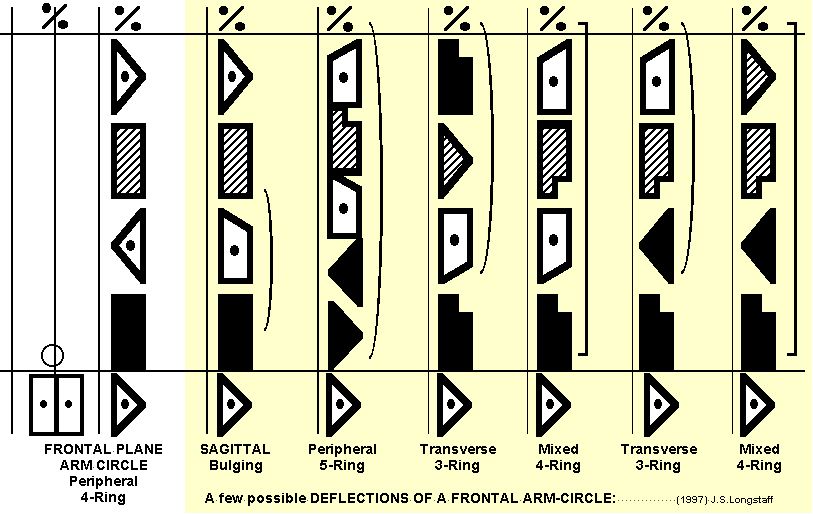
Deflections of Sagittal Planar Arm Circles with lateral bulging
(examples from Rudolf Laban’s Choreutics)
|
(1997) Jeffrey Scott Longstaff Paper and practical workshop at the Third Motus Humanus Round table on professional issues June 5-8, 1997. Northfield, Minnesota: St. Olaf College. (HTML excerpts from the workshop) With Motif Dance Notations presented at the workshop Deflecting Arm Circles
Dimensional and diagonal orientations serve as conceptual prototypes of pure stable directions and pure mobile directions respectively; Similities in other areas of spatial cognition.
|
Sources of Organic Deflections: Support for the hypothesis in kinesiology; Anatomic constraints:
Note that while Cardinal Dimensions and (less so) Pure Diagonals are conceptually simpler Obliquely oriented movements are kinesiologically simpler: Pure planes and dimensions only occur through precise opposition of opposing oblique lines of pull. Even the slightest variation will create the basic Oblique element. Body Movement occurs as: Continuous deflection away from the idealised mental plan.
|
|
Consideration of Deflecting Cardinal Planes.
|

|
|
Deflections of Sagittal Planar Arm Circles with lateral bulging |

|
|
Deflections of Frontal Planar Arm Circles with sagittal bulging |

|
|
Deflections of Horizontal Planar Arm Circles with vertical bulging |